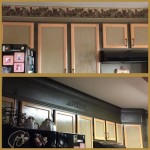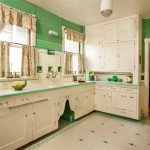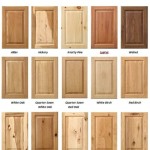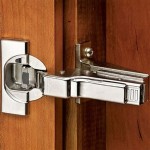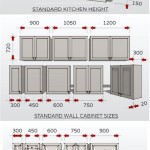No Handle Kitchen Cupboards: A Streamlined and Modern Design Choice
No handle kitchen cupboards have become increasingly popular in contemporary kitchen design. Their sleek, minimalist aesthetic contributes to a clean and uncluttered look, favored for its ability to create a sense of spaciousness, especially in smaller kitchens. This handle-less design also offers practical advantages, such as easier cleaning and a reduced risk of catching clothing.
Several mechanisms enable the handle-less functionality of these cabinets. Push-to-open mechanisms are a common choice, utilizing a spring-loaded latch that releases the door with a gentle push. This system offers a truly handle-less appearance and is relatively simple to install. However, it can be prone to accidental openings if bumped, and the mechanism may require periodic adjustment.
Another popular option is the recessed channel handle, which involves a groove or channel integrated into the top or side edge of the door or drawer front. This provides a discreet grip for opening and closing, maintaining a streamlined appearance while offering a more positive and controlled opening experience compared to push-to-open systems. The channel can be designed in various shapes and sizes, allowing for customization and integration into the overall kitchen design.
J-pull handles, also known as finger-pull handles, offer a subtle alternative to traditional handles. These handles are small, typically metallic, and shaped like a "J." They are installed on the top edge of the door or drawer, providing a discrete grip while maintaining a minimalist aesthetic. J-pull handles are a good compromise between a completely handle-less look and the functionality of a traditional handle.
Touch-latch mechanisms are a more advanced option, employing an electronic latch that releases the door with a light touch. These systems offer a high level of convenience and a truly seamless look. However, they are generally more expensive than other handle-less solutions and may require professional installation. Furthermore, like push-to-open mechanisms, they can be susceptible to accidental openings.
The material choices for handle-less kitchen cabinets are similar to those for traditional cabinets, including wood, laminate, and various types of engineered wood. However, the handle-less design places greater emphasis on the finish and quality of the material, as imperfections are more readily apparent on a smooth, unbroken surface. High-gloss finishes are a popular choice, enhancing the sleek and modern aesthetic.
Maintaining the clean appearance of handle-less cabinets requires regular cleaning. Fingerprints and smudges are more noticeable on these surfaces, especially those with high-gloss finishes. Using a soft, damp cloth with a mild cleaning solution is generally sufficient. Avoid abrasive cleaners, which can scratch the surface.
When considering no handle kitchen cabinets, careful planning is crucial. The choice of mechanism should align with the overall design aesthetic and practical needs. Factors such as ease of use, durability, and budget should be considered. Consulting with a kitchen designer can be beneficial in selecting the most suitable option.
The placement of appliances and work surfaces also plays a significant role in the functionality of handle-less kitchens. Careful consideration should be given to the flow of movement within the kitchen to avoid accidental openings caused by bumping into cabinets. Strategic placement of appliances and work zones can minimize this risk.
Integrating handle-less cabinets into an existing kitchen can be achieved through retrofitting. However, this process may require modifications to the cabinet doors and drawers, and professional installation may be necessary. The complexity and cost of retrofitting will vary depending on the chosen handle-less mechanism and the existing cabinet construction.
No handle kitchen cupboards offer a distinct aesthetic advantage, creating a clean and contemporary look. However, the choice of mechanism and careful planning are essential for ensuring functionality and longevity. By understanding the various options available and considering the practical implications, homeowners can make informed decisions that align with their design preferences and lifestyle.
The variety of styles and mechanisms available for handle-less cabinets provides considerable design flexibility. From the ultra-modern look of touch-latch systems to the subtle elegance of recessed channels, there are options to suit a range of tastes and budgets. This versatility allows for seamless integration into various kitchen styles, from minimalist to traditional with a modern twist.
The ergonomics of handle-less kitchens are also a key consideration. While the streamlined appearance is appealing, the ease of use for all members of the household should be evaluated. Children and individuals with limited dexterity may find certain handle-less mechanisms challenging. Testing different options in a showroom can be helpful in determining the most user-friendly solution.
The long-term durability of the chosen mechanism should also be factored into the decision-making process. High-quality hardware is essential for ensuring smooth and reliable operation over time. Regular maintenance and occasional adjustments may be required, depending on the chosen system. Inquiring about warranties and the availability of replacement parts is advisable.

Handleless Kitchen Cabinets Guide Oppolia

Pros And Cons Of Handle Less Kitchens More

Awesome Kitchen Designs With No Handles Cabinets Without Interior Design

The Pros And Cons Of Choosing A Handleless Kitchen Warehouse

No Handles Problem Ur Cabinets Tampa Bay S Custom Cabinet Company

Handleless Kitchen Cabinets To Enhance The Look Of Your Dream Without Handles
Handleless Kitchen 8 Ideas For Doors Drawers Cupboards Cabinets Architecture Design

Handleless Kitchen Cabinets Guide Oppolia

Kitchen Cabinets With No Handles Tips Techniques Chieftalk Forum

The Handleless Kitchen A Look At Cabinets Without Hardware Houzz Au
Related Posts

